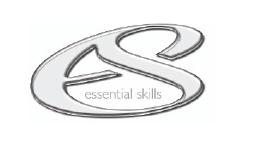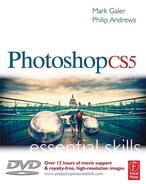Introduction
Photoshop has helped revolutionize how photographers capture, edit and prepare their images for viewing. Most of what we now see in print has been edited and prepared using the Adobe software. The image–editing process extends from basic retouching and sizing of images, to the highly manipulated and preconceived photographic montages that are commonly used by the advertising industry. This book is intended for photographers and designers who wish to use the ‘digital darkroom’ rather than the traditional darkroom for creative photographic illustration. The information, activities and assignments contained in this book provide the essential skills necessary for competent and creative image editing. The subject guides offer a comprehensive and highly structured learning approach, giving comprehensive support to guide Photoshop users through each editing process. An emphasis on useful (essential) practical advice and activities maximizes the opportunities for creative image production.

Anitra Keogh
Acquisition of skills
The first section of this book is a foundation module designed to help the user establish an effective working environment and act as a guide for successful navigation through the image–editing process from capture to print. Emphasis is placed on the essential techniques and skills whilst the terminology is kept as simple as possible, using only those terms in common usage.
Application of skills
The subsequent modules extend and build on the basic skills to provide the user with the essential techniques to enable creative and skilful image editing. The guides explore creative applications including advanced retouching, photomontage, vector graphics, special effects and preparing images for the web. Creative practical tasks, using a fully illustrated and simple step–by–step approach, are undertaken in each of the guides to allow the user to explore the creative possibilities and potential for each of the skills being offered.
A structured learning approach
The study guides contained in this book offer a structured learning approach and an independent learning resource that will give the user a framework for the techniques of digital imaging as well as the essential skills for personal creativity and communication.
To acquire the essential skills to communicate effectively and creatively takes time and motivation. Those skills should be practised repeatedly so that they become practical working knowledge rather than just basic understanding. Become familiar with the skills introduced in one study guide and apply them to each of the following guides wherever appropriate.

The DVD has images and movies available to support and guide the learning process.
Supporting DVD
A supporting DVD and dedicated web log (blog) have been set up to enable users to access current information. The address for the blog site is:www.photoshopessentialskills.com The supporting files can be accessed through the Bridge interface (Computer > CS5_DVD).
research and resources
You will only realize your full creative potential by looking at a variety of images from different sources. Artists and designers find inspiration in many different ways, but most find that they are influenced by other work they have seen and admired.
Essential information
The basic equipment required to complete this course is access to a computer with Adobe Photoshop CS5 (CS4 would suffice for many of the projects contained in the book). The photographic and design industries have traditionally used Apple Macintosh computers but many people now choose ‘Windows’–based PCs as a more cost–effective alternative. When Photoshop is open there are minor differences in the interface, but all of the features and tools are identical. It is possible to use this book with either Windows–based or Apple Macintosh computers.
Due to the large file sizes involved with digital imaging it is advisable that you have a highcapacity,removable storage device attached to the computer or use a CD or DVD writer to archive your images.
Computer commands which allow the user to modify digital files can be accessed via menus and submenus. The commands used in the study guides are listed as a hierarchy, with the main menu indicated first and the submenu or command second, e.g. Main menu > Command or Submenu > Command. For example, the command for opening the Image Size dialog box would be indicated as follows: Edit > Image Adjustments > Image Size.
Many commands that can be accessed via the menus and submenus can also be accessed via keyboard ‘shortcuts’. A shortcut is the action of pressing two or more keys on the keyboard to carry out a command (rather than clicking a command or option in a menu). Shortcuts speed up digital image processing enormously and it is worth learning the examples given in the study guides. If in doubt use the menu (the shortcut will be indicated next to the command) until you become more familiar with the key combinations.
Note > The keyboard shortcuts indicate both the Mac and PC equivalents.
Example: The shortcut for pasting objects and text in most applications uses the key combination Command/Ctrl + V. The Macintosh requires the Command key (next to the spacebar) and the V key to be pressed in sequence whilst a PC requires the Control key (Ctrl)and the V key to be pressed.

